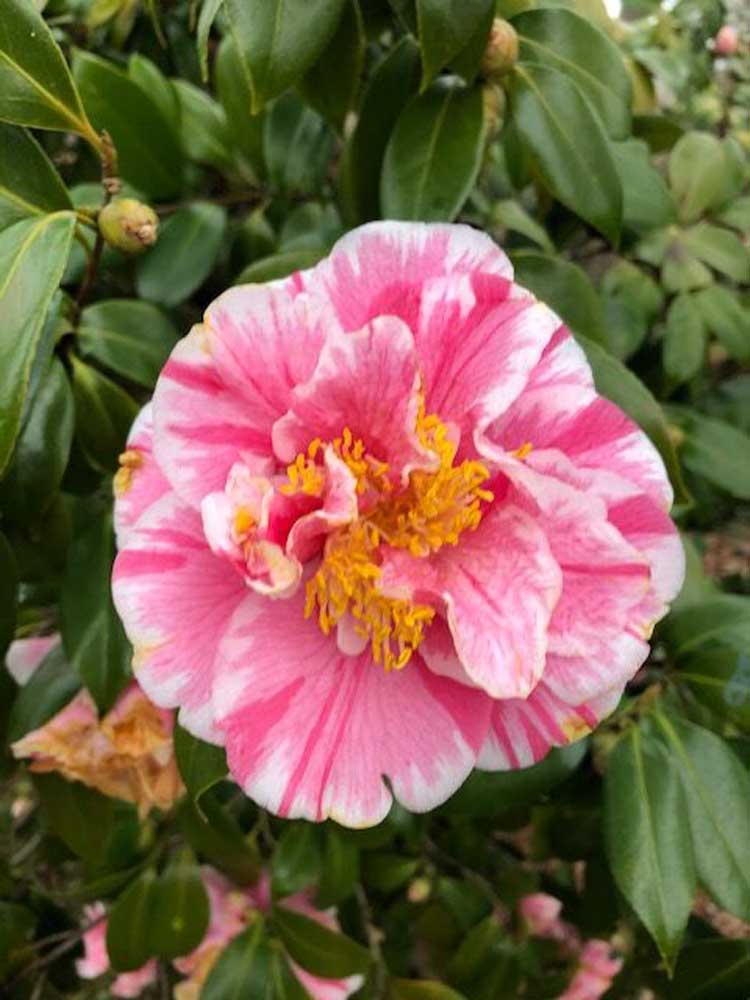Master Gardener: Caring for camellias
Published 8:38 pm Monday, October 4, 2021

- Camellia
The first step is deciding what types of camellias to plant. This is usually personal preference as to type of flowers, plant growth and suitability for the climate. Visiting local nurseries, websites, camellia flower shows and gardens are good ways to help decide which plants to choose. There are thousands of new camellias available and new cultivars are introduced each year.
Preparing a site for planting a new camellia involves having soil that drains well, is high in humus and is acidic (PH 5.0-6.5). Most camellias prefer partial or dappled shade and should not be exposed to intense afternoon sun or areas with too much shade. Camellias will usually survive occasional temperatures as low as 10-0 degrees Fahrenheit, although their flower buds are damaged at 26 degrees.
Trending
Preparing the planting hole consists of digging a hole twice the size of the root ball, leaving the center of the hole elevated. Place the root ball on the elevated center and fill in the rest of the hole with soil that has been prepared for the camellia. Sandy soil will need additional leaf mold or coarse peat moss and small pine bark in equal parts. Adding coarse sand and humus to loamy soil will provide optimal growing conditions. For garden soil that is primarily clay, remove as much as is feasible and add equal amounts of coarse sand, medium size pine bark and humus. Water well and thoroughly at least weekly for several months, making sure the soil never dries out.
Camellias may be planted in any month as long as the plants have adequate moisture. However, late fall is the preferred planting time since camellias are approaching dormancy or are dormant.
The basic feeding schedule consists of no more than three feedings. The first feeding is when new growth is seen (April 1/Easter). A second feeding in midsummer (July 1/ Independence Day) is recommended if the plants appear to need a boost. A third feeding is as buds are being formed (Sept. 1/Labor Day). If buds are mature and flowers are forming around Labor Day, feed with a low nitrogen fertilizer (N3 or less). Camellias are dormant when in bloom and too much nitrogen will cause the plant to break dormancy which can cause the plant to be vulnerable to freeze damage.
A granular chemical fertilizer prepared for acid loving plants is the easiest fertilizer to use, although organic fertilizer such as cotton seed meal is good but may need an added application of iron and blood meal.
Mulch suitable for camellias includes pine bark, coarse peat moss, etc. The surface around the plant should be mulched with 2-4 inches of appropriate mulch. This will help reduce weeds and moderate the surface temperature. The mulch should not touch the main stem.
The best time to prune is in the spring after blooming and before the first growth spurt. All dead, weak and crossing branches need to be removed. It is also a good idea to thin the center to improve air circulation and help reduce the possibility of mold and fungal diseases.
Trending
Camellias were first considered ‘exotics’ that had to be housed in heated greenhouses and proudly displayed by their owners. However, camellias are very successful as outdoor plants, especially in our southern states. Their care is moderate and their needs are easily met, (as long as water is available). The reward of spectacular blooms over the late fall through winter season is reason enough to plant them in any garden.
(The Smith County Master Gardener program is a volunteer organization in connection with the Texas A&M AgriLife Extension Service.)






